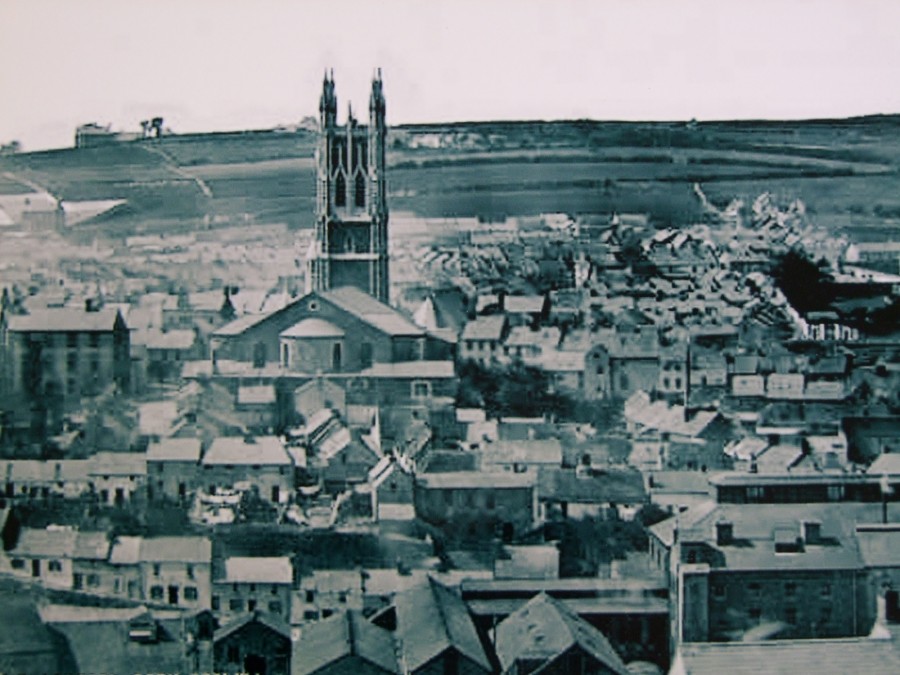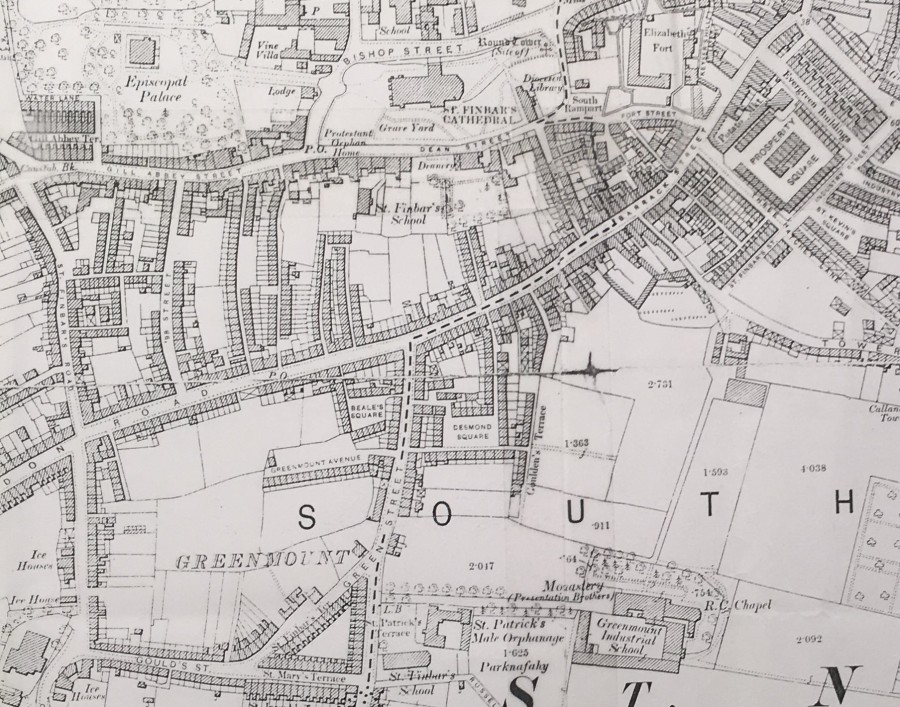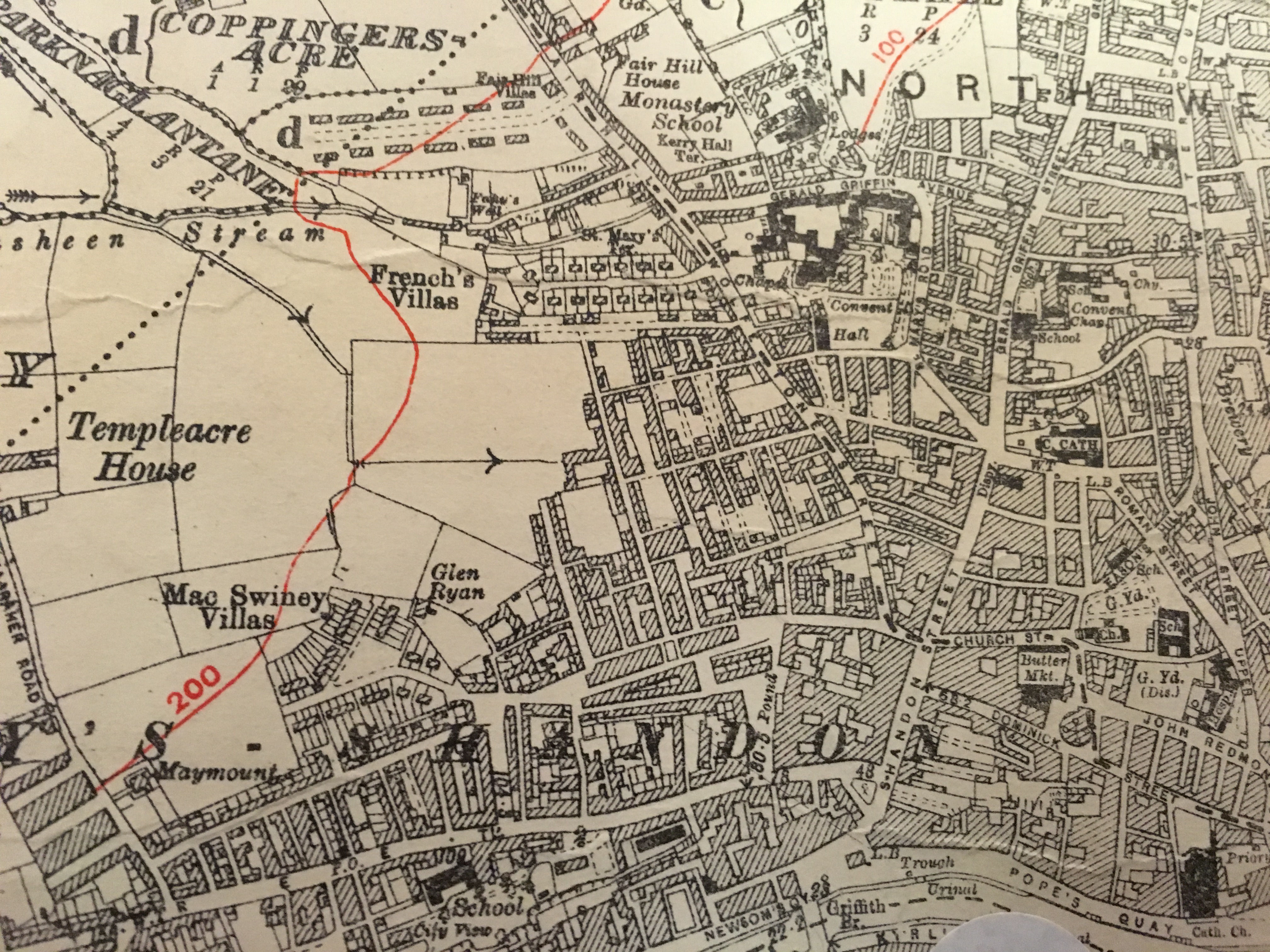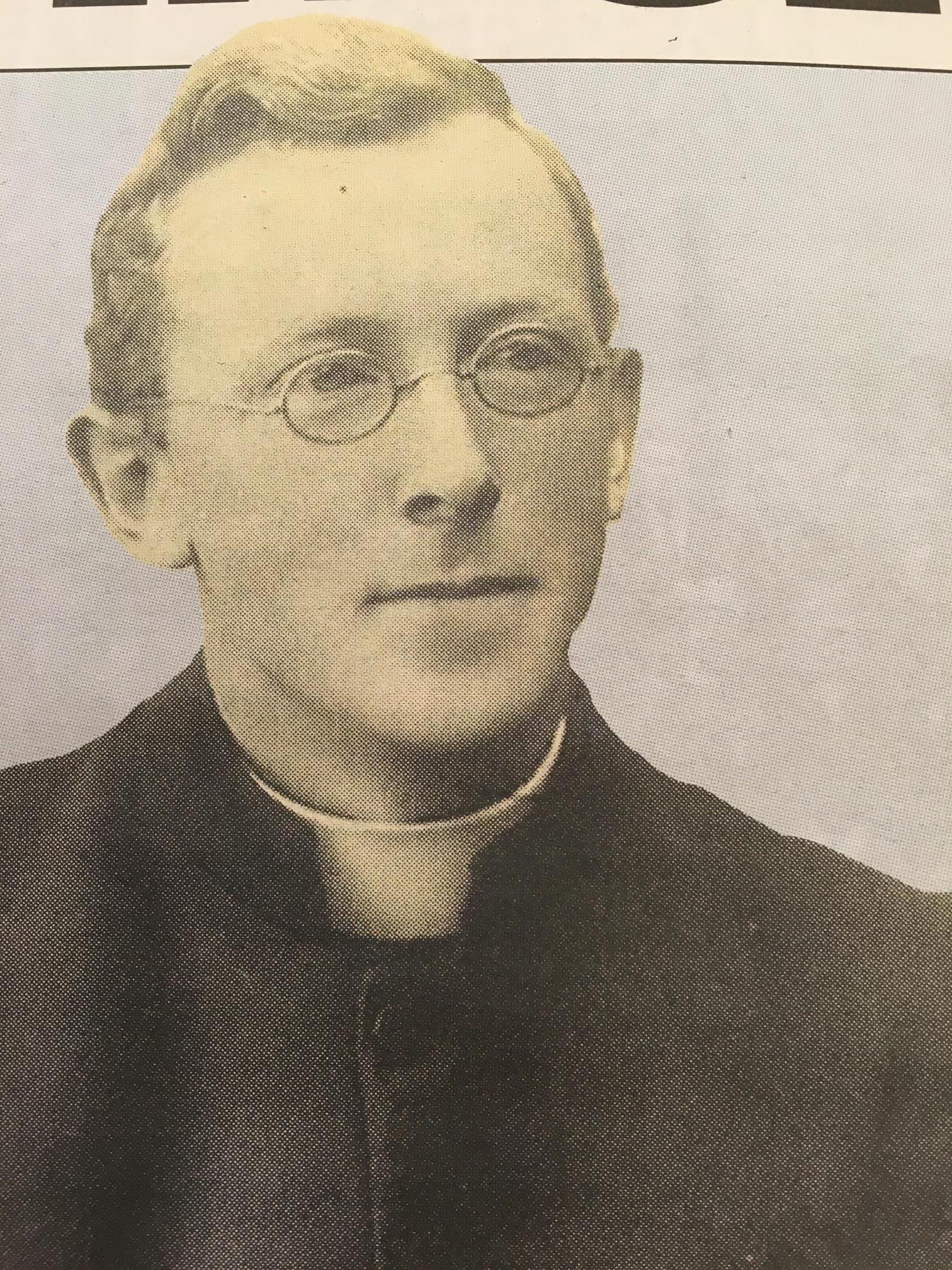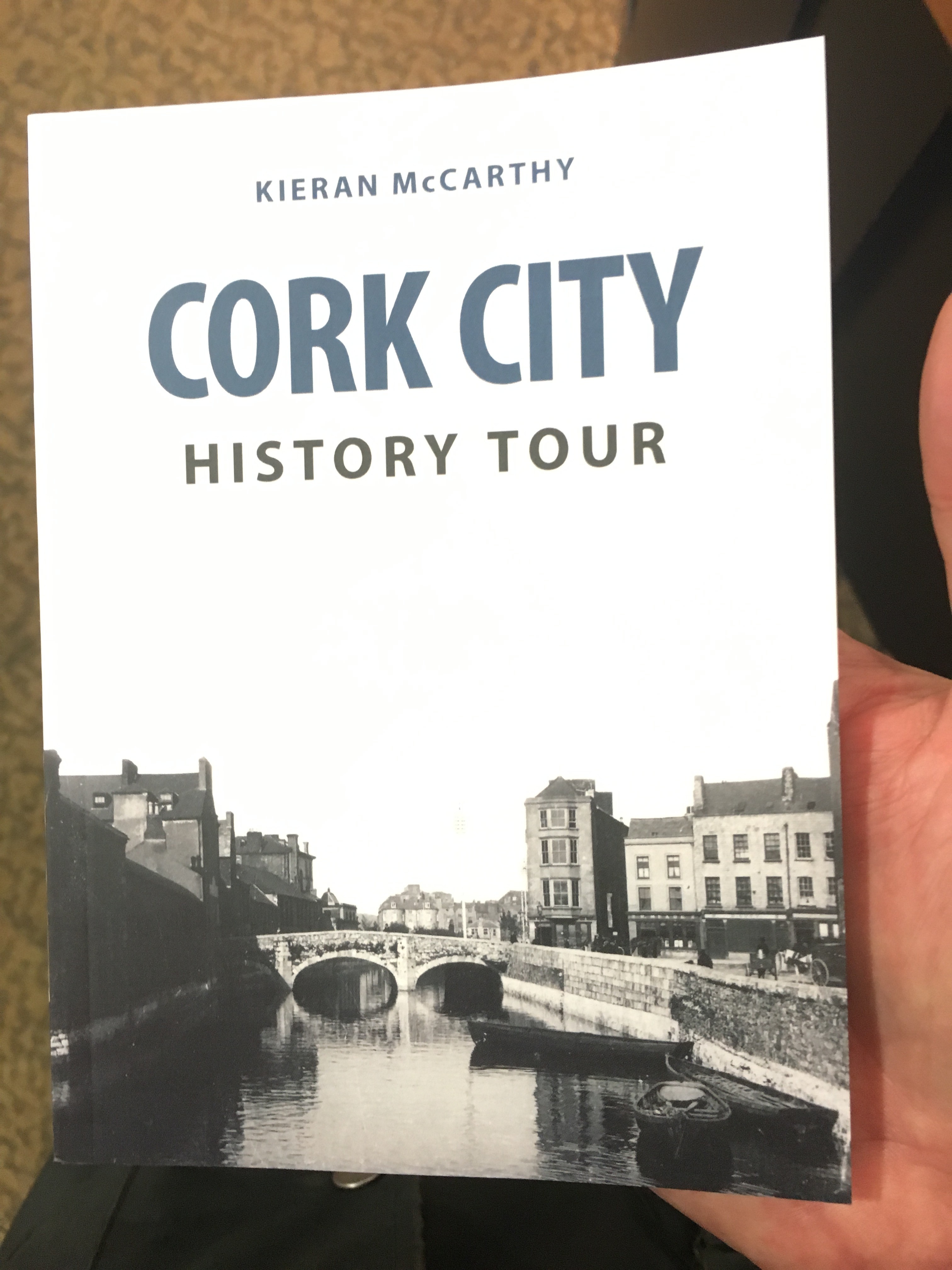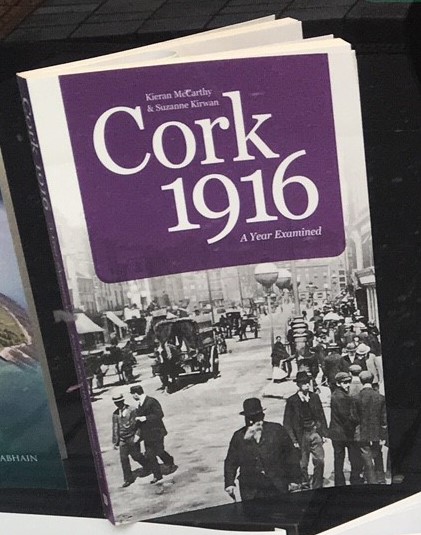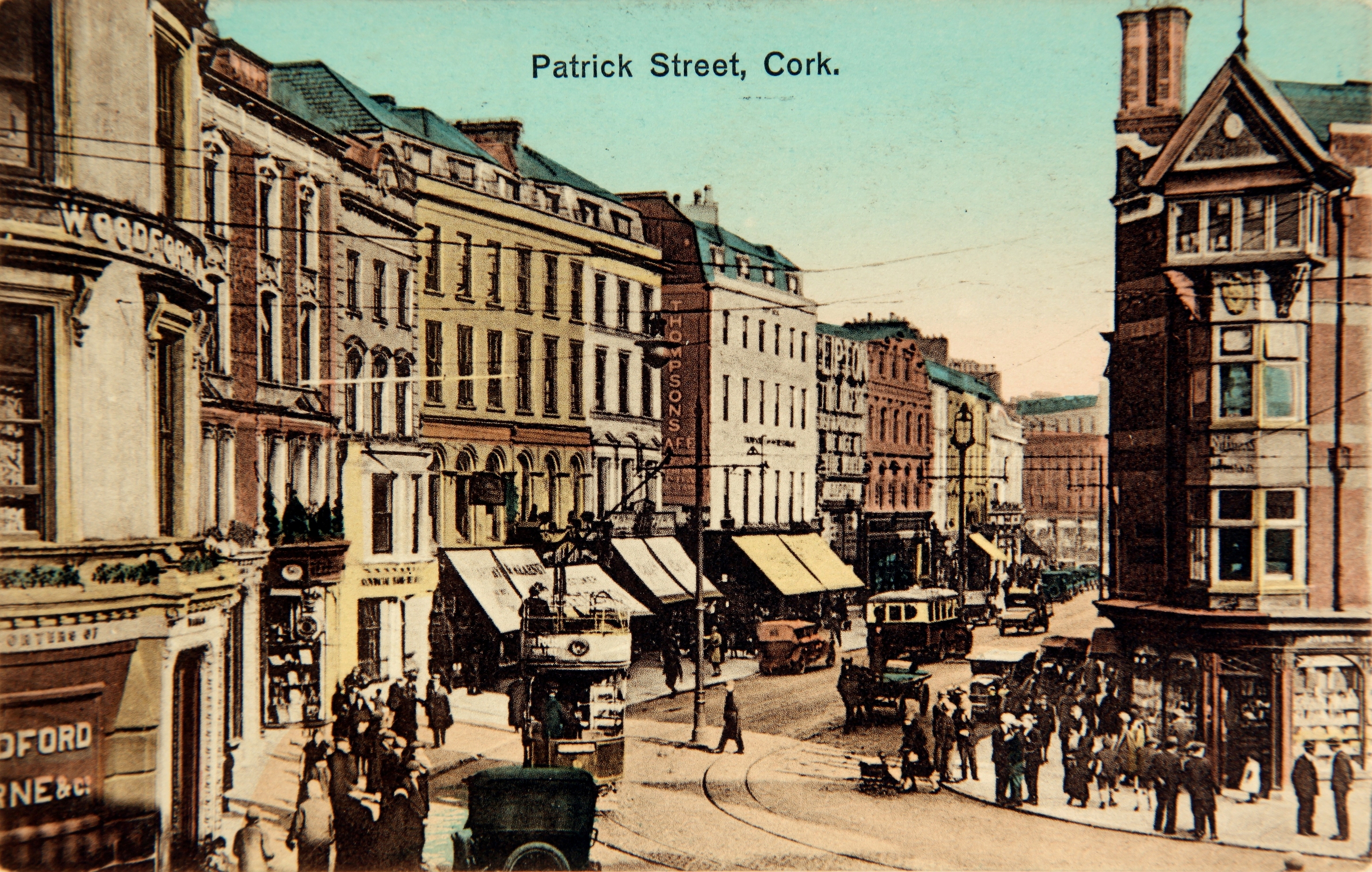Monthly Archives: October 2016
Kieran’s Our City, Our Town, 27 October 2016
Kieran’s Our City, Our Town Article,
Cork Independent, 27 October 2016
Remembering 1916: The Sting of Poverty
Continuing on from last week’s column on the work of Fr Aengus MacSweeney, who lectured during 1916 across the city on the poverty conditions within the city’s slums – during his fieldwork, he found that that the total weekly income of 354 of the 1,010 families he studied did not exceed 19s.
Of those earning under 19s per week, Fr MacSweeney described vast poverty; “All the persons living in these houses were miserable looking; the grown people had starvation written on their faces, while the children, and strangely enough the very young, were almost naked. The rooms of these tenements were dark, with evidence of decay in every part of them, and as poverty was telling its tale on the countenances of the inmates, neglect and the evident and absolute disregard of the landlord were registered on the walls, the windows, the doors, the staircases, of the houses themselves. Personally I do not think that you could find more poverty and so great neglect in any place, and confined to so small an area, as existed in this row of tenement houses”.
To get a further idea of the standard of poverty for the 354 families in Fr MacSweeney’s study, he detailed five examples from his notes taken during his investigation. His first example was a labourer who was married with ten children – all living in two rooms and a kitchen and who paid rent of 2/6. There were six other families in this house. There was one water tap and one water closet for all. The family was very poor with two daughters and son working but their wages were small. His second example was a widow – who lived by charing or cleaning, had three children to support and paid 5/6 for a small house, which was kept clean and tidy. His third example was a porter – badly paid, his wages were increased by contributions from relatives, and has five children. His fourth example was a quay labourer – married, and who had two children and paid 3/- rent; his house was clean and tidy. His fifth example was an army pensioner – he could not get work, was married, had seven children; the rent was 5/-; his family was very poor.
As for clothing of his impoverished class, Fr MacSweeney noted “threadbare rags”. The clothing of most of the people was sufficient enough to protect them against the changing conditions of the seasons; “These families live in one constant struggle, from weekend to weekend, striving to make ends meet. Living just above that state of poverty that stings deeply and tends to demoralise its victims…they were living from hand to mouth and ever standing dangerously near the abyss of extreme poverty”.
Fr MacSweeney visited a lane off one of the city’s public thoroughfares, and close to the city centre. He described a square that had the appearance of decay. It was nothing more than a narrow lane leading from one street to another. It contained fourteen or fifteen houses, all of which were tenements. Those houses were badly constructed and dirt and neglect had given them that decaying look they had from the outside. As for the interiors, the houses with few exceptions were ill-kept to the last degree; the entrance to each house was through a small hall with two rooms at either side which were dark and small, and as, far as Fr MacSweeney could judge, impossible to keep clean, for the floors were damp and saturated looking. At the end of the hall was a narrow stairs leading to the rooms above, of which there were six, all equally small equally dirty, and equally foul smelling. There was a small yard, about 10 feet by 6 in size in size. There was a small yard, about 10 feet by six feet in size, with one water closet and one water tap, which do duty for the whole house. Each house had at least four families, and some of these were larger than the average. In one of these tenements there were seven families occupying eight rooms.
In another tenement house Fr MacSweeney he found a family of thirteen persons – father, mother, and eleven children whose ages ranged between four and seventeen – all living in two rooms and a “hole called a kitchen”. There were four other families in the same house, one room being occupied by a married couple, the remaining five rooms by three families with children; he calculated five persons to each of these three families – a total of thirty people living in eight rooms, and for sanitary accommodation having one water tap and one closet.
In a third tenement house, it was three stories high, and contained about eight rooms. Fr MacSweeney described that families who occupied more than one room in these five or six tenements were certainly in the minority, and yet there were numbers of children about which pointed to overcrowding, and to a very serious extent too. Here a father and mother and six children occupied one room in which they slept and worked and took their meals and washed. In addition to the overcrowding, there was extreme poverty accompanied by extreme neglect and dirt. Behind each tenement was a miserable yard bestrewn with all kinds of refuse, with one water closet and one water tap for each house.
Cork 1916, A Year Examined by Kieran McCarthy & Suzanne Kirwan is now available in Cork bookshops.
Captions:
867a. 867a. North Cathedral area c.1910, one of the centres of slums in Cork City (source: Cork City Library)
867b. Map of slum laneways off Barrack Street, 1900 (source: Cork City Library)
Kieran’s Question to the CE, Cork City Council Meeting, 24 October 2016
To ask the CE on the up todate progress on Blackrock village regeneration project as well as an update on funding for phase 2? (Cllr Kieran McCarthy)
Cllr McCarthy: Elizabeth Fort Disappointment, October 2016
Historian and Independent Councillor Kieran McCarthy has expressed disappointment that the development of Elizabeth Fort as a tourist product will not progress in the short term. Fáilte Ireland have expressed a disinterest in funding an interpretative centre at the fort, stating that other forts in the harbour will represent the Cork region’s history of fortifications. Cllr McCarthy noted at the last Cork City Council meeting to management that leaving Elizabeth Fort undeveloped comprises a series of missed opportunities – “we have spent four to five years developing a plan for the fort – this is the most prominent landmark in the city region after Shandon. It is unique in Ireland to have an Elizabethan Fort still standing in an inner city space. The fort is the flagship project for the South Parish Local Area Plan. The re-opening of the ramparts, thanks to the OPW, has helped to inspire re-generation on the street and put a pep in the work of planners trying to get landlords of empty properties on Barrack Street to develop them.
Cllr McCarthy continued; “The re-opening of the fort has sent out a message that long term vacancy and dereliction on Barrack Street will not be tolerated. This message will now be diluted due to lack of investment. The fort should be the tourist structure to tell the early origins story of Ireland’s southern capital from the Vikings to nineteenth century industrialist housing– it heads up a suite of historical sites in the local area – from Red Abbey to the 250-year old South Chapel, the new Nano Nagle Community Project to the story of Friar’s Walk and the Cork Improved Dwellings Company houses such as Evergreen Buildings. It is becoming more and more clear that Cork City is being squeezed out of campaigns of the Wild Atlantic Way and Ireland’s Ancient East. It is disheartening to see the lack of reference to Cork City in the website of Ireland’s Ancient East”. Cllr McCarthy has called on City Council officials to engage with Fáilte Ireland to put Ireland’s second city back firmly on the Irish tourist map; “New plans for Elizabeth Fort also need to be put together as soon as possible, so we can start preparing plan b to secure the fort’s future”.
Cllr McCarthy, Blackrock Pier Regeneration Update, October 2016
Cllr Kieran McCarthy has welcomed the update by the management of Cork City Council that phase one of the Blackrock Pier Development is on track to be finished by December of this year. Funding for phase 2 is still being sought, which is the development of the car park and pier area itself. Cork City Council has now written to the National Transport Authority for continued funding of phase 2. It is expected that a decision on same will be made around the end of November and a report will be made to Council. If the funding application is successful the current contractor will commence construction on phase 2 in January 2017. Cllr McCarthy noted to the Chief Executive: “Phase 1 has been pursued quickly but with alot of patience asked of residents, business and the community association; it’s not a short term patience but long term in terms of twenty years or more waiting for this project. We are so close in completing what is a fantastic plan and one which all can be proud of; the tram track lines have reminded us all of the great heritage, Blackrock has. We need to finish what we started and not just stop in December”.
Kieran’s Our City, Our Town, 20 October 2016
Kieran’s Our City, Our Town Article,
Cork Independent, 20 October 2016
Remembering 1916: MacSweeney’s Poverty Study
This week one hundred years ago, discussions filled the newspapers of the impending cold winter and the need to look after the impoverished of the city. The city’s institutions such as its hospitals – Mercy Hospital, South and North Infirmary, and institutions such as the City and County gaols, the Magdalene Asylum, the Sailor’s Home as well the City’s workhouse or Cork Union record the need to address the needs of society and to provide more financial aid and food to citizens immersed in large scale poverty. The other pillars of Cork Society were its educational ones – the core schools that appear are the North Monastery, the South Presentational Convent, Crawford Municipal Technical Institute and the Cork School of Commerce. All continue through the press to showcase the importance of education and life-long learning in escaping from poverty traps in the city’s vast slum network, and to help the overall societal pull to a better life.
Across October 1916 the Cork Industrial Association called upon the Corporation of the city to provide cheap fuel for the poor during the winter months. It was predicted that fuel of all kinds would likely increase in price due to demand. The Association deemed the prices far beyond the resources of the small wage earners, whose mode of livelihood – difficult enough before the war – had now become a large problem. They spoke of an impoverished class – those who had no regular employment, and whose income did not exceed more than a few shillings each week – who had no possible chance of procuring sufficient food, not to mention fuel. Without the aid of charitable assistance either from their own friends, a little better off than themselves, or from the societies in the city organised for the purpose of helping the necessities, they remained in serious deprivation. The Association denoted that in early October; “Despite the increase of employment in some trades and the circulation of large sums such as war separation allowances, inquiry will show that much extreme poverty exists in Cork at the present time. That sad condition of things will become aggravated with the approach of winter unless organised public effort is made to ameliorate the lot of the genuine poor“.
There is plenty data on living conditions present in the work of Fr Aengus MacSweeney, parish priest of St Mary’s Church, Pope’s Quay who throughout 1916 gave talks on poverty and living conditions of working classes in the City to different organisations. This was part of a personal programme to bring public attention to the conditions he encountered in an MA study. Fr MacSweeney was born in Castlecomer, County Kilkenny in 1894 and ordained into the Dominican Order in 1905. After first serving in Galway, he moved to Cork City in 1913. He had already obtained a BA and on his arrival in Cork, he pursued an MA in University College Cork.
One of Fr MacSweeney’s talks is detailed in the Cork Examiner in early February 1916 during the second of a series of Economic Conferences organised by Professor Smiddy and Mr Rahilly. It was held in the spacious Examination Hall of University College Cork. Professor Smiddy, introduced Fr MacSweeney, and pointed out that he had made an extensive investigation into the lives, housing, incomes, and standards of living of over 1,010 wage-earning families in Cork comprising 5,058 persons. Part of his MA thesis was published by the University in March 1917 (Poverty in Cork) and supported by the new Bishop of Cork, Daniel Cohalan.
Father MacSweeney, at the outset of his paper, dismissed mere hearsay evidence and vague statements concerning the poverty of a city. His study involved fieldwork within the slums. He found that 354 of his 1,010 families who he studied that that their total weekly income did not exceed 19s. The total earnings of these families, which included 1,832 individuals, was £243 17s 5d. Taking the prices and business rates prevalent before the war, the support of these individuals in the workhouse would cost the rates £233 2s for food alone. He noted that it was obvious that there were hundreds of families subsisting in Cork at a rate, which was insufficient to provide an adequate subsistence.
Father MacSweeney did not confine himself to numerical and statistical results. He presented several case studies of “struggles, despair and want”. He highlighted that poverty was a very complex and multi-sided, and that it raised problems in every sphere of social activity. He related that that a third of the families he interviewed did not live in any particular district. They were scattered over the city and were the most migratory portion of the population. Low rent was an attraction for them and determined their fixity of tenure. Fr MacSweeney dwelt on the bad housing conditions of the city and the problem of elevating and educating the children, and on the effects of “blind alley” employments. He also referred to the question of drink and improvidence; he regarded much of the excessive drinking as the effect rather than the cause of poverty.
Abstracted from Cork 1916, A Year Examined by Kieran McCarthy & Suzanne Kirwan is available in Cork bookshops.
Captions:
866a. Map of alaneways of slums, c.1910, north west ward of Cork City (source: Cork City Library)
866b. Fr Aengus MacSweeney, author of Poverty in Cork, 1917 (source: Cork City Library)
Cllr McCarthy, Archaeology must be a priority on Events Centre site
Press release:
“I welcome the report of the Department of Arts, Heritage and the Gaeltacht regarding the concerns over minding the archaeological layers beneath the Beamish and Crawford site. I have noted some of their concerns in the past in the Council Chamber and was told, that the Project “Helix” or partnership of Developer, City Council and Central Government were on top of the matter but that was it; I have heard nothing else until the Department’s serious concerns over the archaeological layers; so I am appalled at these revelations by the Department.
I would like to say at the outset that the City Archaeologist is on top of her job and always is. But I can’t help but think through this serious intervention and revelation by the Department shows clearly that the archaeology is still not a major priority to be integrated into the events centre development. It would be an enormous missed opportunity if we cannot integrate the city’s history with a landmark events centre. I want the Events Centre built but not at the expense of destroying the city’s heritage for the sake of high rise student apartments. I don’t wish to a rerun of the 1970s Viking Wood Quay Dublin situation whereby the proper investigation and proper integration of the archaeology was sacrificed for the sake of an office block. The multitude of City Council archaeology reports on Cork’s medieval spine have showed us how much of Cork’s story lays underground in a great preserved condition in estuarine silt. Our archaeologists have been outstanding in their scholarship but this will be all for nothing if there is no strategy for archaeology integration at the Events Centre site. The test excavations in the Grand Parade City Carpark in the 2000s showed that the city walls, late Viking house foundations, and a multitude of objects have shown the rich archaeological layers beneath our city. We have seen many developments over the years, for example Kyrl’s Quay, in the 1990/ where the archaeology found such as the 60 metre town wall was not showcased as much as it could, and now lies as a 10 metre section locked up from the public now beneath the car park due to anti-social behaviour; there have been other factors of finance which have led to lack of integration as well as lack of vision by some developers towards the integration of the past into the future.
Kieran’s Our City, Our Town, 13 October 2016
Kieran’s Our City, Our Town Article,
Cork Independent, 13 October 2016
Kieran’s New Book, Cork City History Tour
The second of two books penned by myself this year has just been published by Amberley Press and is entitled Cork City History Tour. I have coincided its launch with a free historical walking tour of the Victorian Quarter for the Urban October, Life in the City Project – 2pm, meet at top of St Patrick’s Hill, Sunday 16 October. The new book promotes that the best way to get to know a city like Cork is to walk it – in Cork you can get lost in narrow streets, marvel at old cobbled laneways, photograph old street corners, look up beyond the modern shopfronts, gaze at clues from the past, be enthused and at the same time disgusted by a view, smile at interested locals, engage in the forgotten and the remembered, search and connect for something of oneself, thirst in the sense of story-telling – in essence feel the DNA of the place.
Cork has a soul, which is packed full of ambition and heart. Giving walking tours over 21 years has allowed me to bring people on a journey into that soul but also receive feedback on the wider contexts of what visitors and locals have seen elsewhere. Cork is a city packed with historic gems all waiting to be discovered at every street corner. This book provides insights into about 60 such sites in and around the city centre island. One could have easily added three and four times as many sites to a book such as this.
Cork possesses a north-west European and an eastern North Atlantic port story. Located in the south of Ireland, it is windswept by tail ends of North Atlantic storms, which consistently drench the city and rural areas with wind and rains – but they leave to showcase a very photogenic urbanity with amazing sunsets on the river channels and a resilient green agricultural hinterland and chiselled raw coastline. Cork’s former historic networks and contacts are reflected in its the physical urban fabric – its bricks, street layout and decaying timber wharfs. Inspired by other cities with similar trading partners, it forged its own unique take on port architecture.
Twice a day and every day the tide sweeps in to erase part of this history. The river meanders through this city built on a swamp and sweeps in a sense its historic narratives along. Cork is bound to the river and tide as they are bound to it. It developed because of its connections through water to other cities in Ireland and within the former British empire. Exploring the harbour area, one can still find residues of the mud flat/ estuarine silt landscape that the city was constructed upon. It is a great feat of engineering to build a city on a swamp.
In the new book, there are many historic sites for the reader to explore. Of course each one of the sites deserves a book to be written on them and many have by the city’s array of local historians. The book’s trail takes in the story of the early origins of the city – the monastic site of St Finbarr to Viking age histories to the Anglo-Norman walled town followed by historic areas such as Shandon, St Patrick’s Street, City Hall, Sunday’s Well and the Wellington Road Victorian Quarter.
The first known settlement at Cork began as a monastic centre in the seventh century, founded by St Finbarre. This is now marked by the late nineteenth structure of St Finbarre’s Cathedral. it stands tall proud in its ecclesiastical heritage and also imbuing the city and wider region with a need for community to bring people together and to invest physically and morally in such structures. Hence, Cork has a myriad of church buildings with different styles from different times when such buildings were called upon to impart new messages about their contribution to the city.
The main urban centre was built on a series of marshy islands at the lowest crossing-point of the river, where it meets the sea. One can imagine the timber posts struck into the marshland to mark out the tentative first couple of Viking houses, and the first fires lit in such flood prone structures. The laying of the first block of the Anglo-Norman town wall must have been equally momentous. The actual stone from beneath the encircling southern and northern hills – sandstone and limestone provided the defences. The creeking open for the first time of Watergate and the control by the King’s and Queen’s Castles would have sparked excitement especially as the first timber ship clocked against the key walls. Similarly, the first ship from somewhere abroad in England or France would have brought a sense of wonder and acknowledgment in the city’s role in maritime western Europe.
The topping out of St Anne’s Church Shandon and years later the addition of the bells and clocks would have met with delight and pride. From the top of Shandon, you can gaze down upon the multi-coloured fabric and multi-faceted narrative presented in its urban fabric. Climbing down and walking amongst the streets and laneways, and unravelling those narratives has brought great joy to me personally and has kept me with my camera and notebook in hand trying to make sense of Cork’s place in north west Europe as an ambitious and soulful place.
Cork City History Tour is available in Waterstones and Liam Ruiseals.
Captions:
865a. Front cover of Cork City History Tour (2016) by Kieran McCarthy
865b. Postcard of King Street, now MacCurtain Street, c.1900, the subject of a walking tour on the 16 October (source: Cork City Museum)
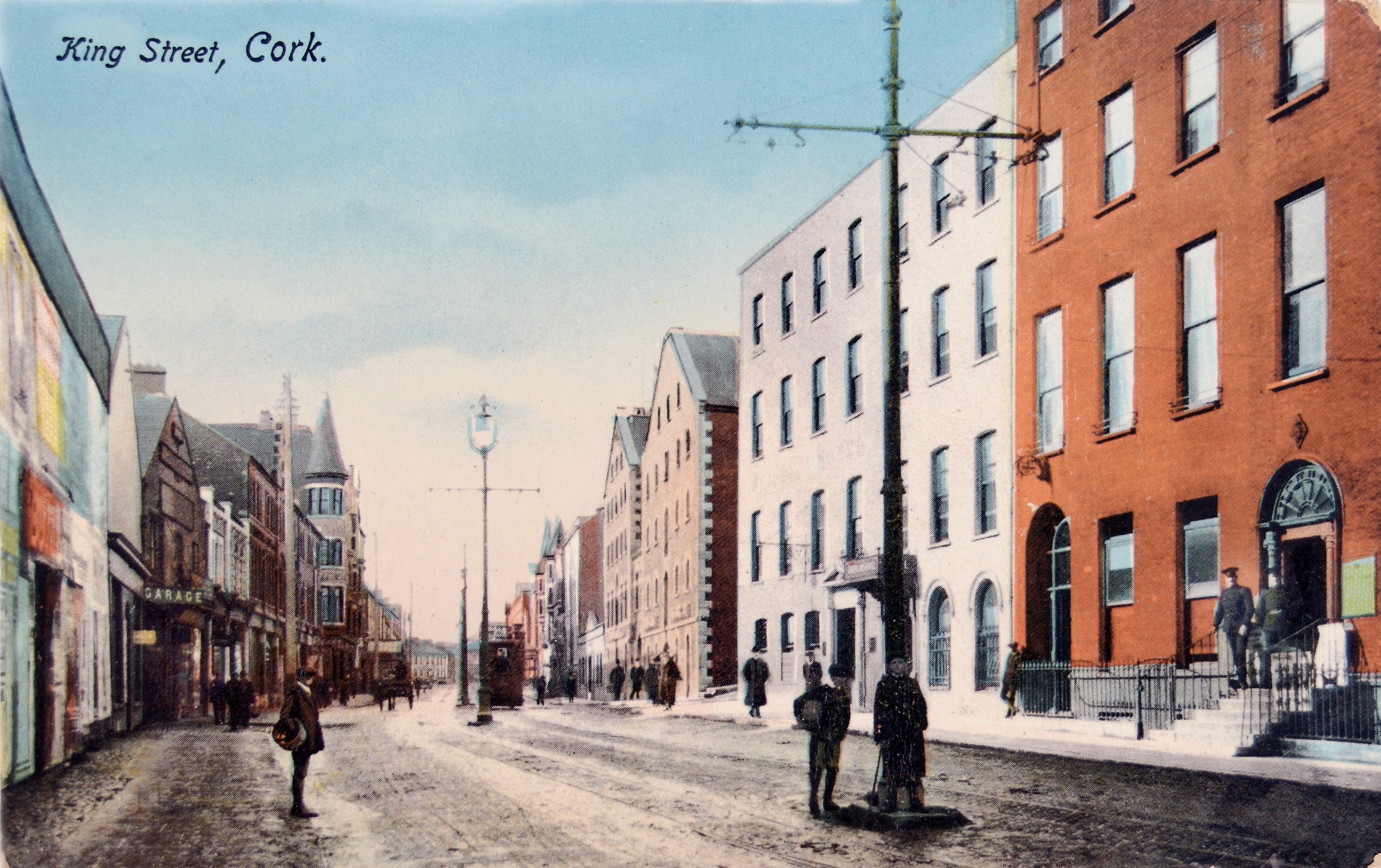
Historical Walking Tour, The Victorian Quarter, Sunday, 16 October, 2pm
Sunday 16 October, The Victorian Quarter, 2pm, free, leaving from Audley Place, the top of St Patrick’s Hill, duration: two hours; ends at St Patrick’s Church, Lower Road.
Kieran Mc
Kieran’s Our City, Our Town, 6 October 2017, Cork 1916, A Year Examined
Kieran’s Our City, Our Town Article,
Cork Independent, 6 October 2016
Kieran’s New Book, Cork 1916: A Year Examined
